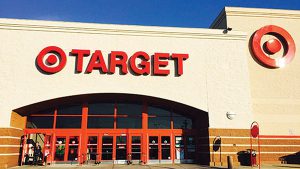If Walmart Inc signalled better times ahead for the broader economy, Target Corp’s profit collapse is a reminder that battered big-box stores aren’t in the clear yet.
Target laid bare the damage from marking down its mountain of inventory, with an almost 90% slump
in second-quarter profits. That’s in stark contrast to Walmart’s forecast that earnings wouldn’t fall as much as expected when it warned on profit last month. Target shares declined as much as 5% in early trading.
Why the difference between the two companies?
One explanation is that Walmart generated about half of its sales from food in 2021, while the figure for Target was just 20%. That means Target is much more exposed to Americans ditching discretionary purchases, such as clothing, home furnishings and electronics, because they have to spend more on food, fuel and other things they need. It didn’t help that the company stocked up on these categories, anticipating the frenetic pace of pandemic buying would continue.
Target aggressively discounted excess inventory in areas such as kitchen appliances, patio furniture and bikes to avoid its cluttering stores and free up warehouse space. That was the right strategy, but it exacted a heavy toll on earnings. While same-store sales rose 2.6% in the three months to July 30, just shy of the Bloomberg consensus of analysts’ expectations, net earnings were a meager $183 million, compared with $1.8 billion in the year-earlier period. The operating margin slumped to 1.2% from 9.8%.
Amid the bleak report, Target maintained its outlook for full-year revenue growth in the low- to mid-single digit range and for an operating margin of about 6% in the second half of the year.
There are some grounds for optimism. With US inflation slowing, some of the pressure on discretionary spending should abate. Similar to Walmart, Target said the start of the back-to-school season, often an indicator of fall and winter business, had been encouraging. More broadly, US retail sales rose almost 9% year-on-year in July, although that was flattered by inflation and discounting in the market.
The chain also looks to be getting a grip on its unsold stock, which should put it in a better position for the crucial winter holiday season.
Although inventories, at $15 billion, were little changed from the end of the first quarter, Target has cut about $1 billion of stock
in discretionary categories. The company said the vast majority of clearance costs were behind it. It has also pared its fall orders by about $1.5 billion.
Despite the recent difficulties, Target is still one of America’s best-run retailers. It has put its almost 2,000 stores at the heart of its strategy, making them attractive places to shop and using them as hubs for online deliveries. It also has a strong suite of private-label brands, which should benefit from consumers trading down, and it is particularly known for its cheap chic fashion.
Yet maintaining its full-year forecast leaves little room for maneuver. Target is at risk from another step down in discretionary spending if recent more positive shopping trends turn out to be fleeting.
The shift from selling nice-to-have items to essentials could also weigh on margins, as food and beverage products are less profitable than clothing and home furnishings.
—Bloomberg
 The Gulf Time Newspaper One of the finest business newspapers in the UAE brought to you by our professional writers and editors.
The Gulf Time Newspaper One of the finest business newspapers in the UAE brought to you by our professional writers and editors.
